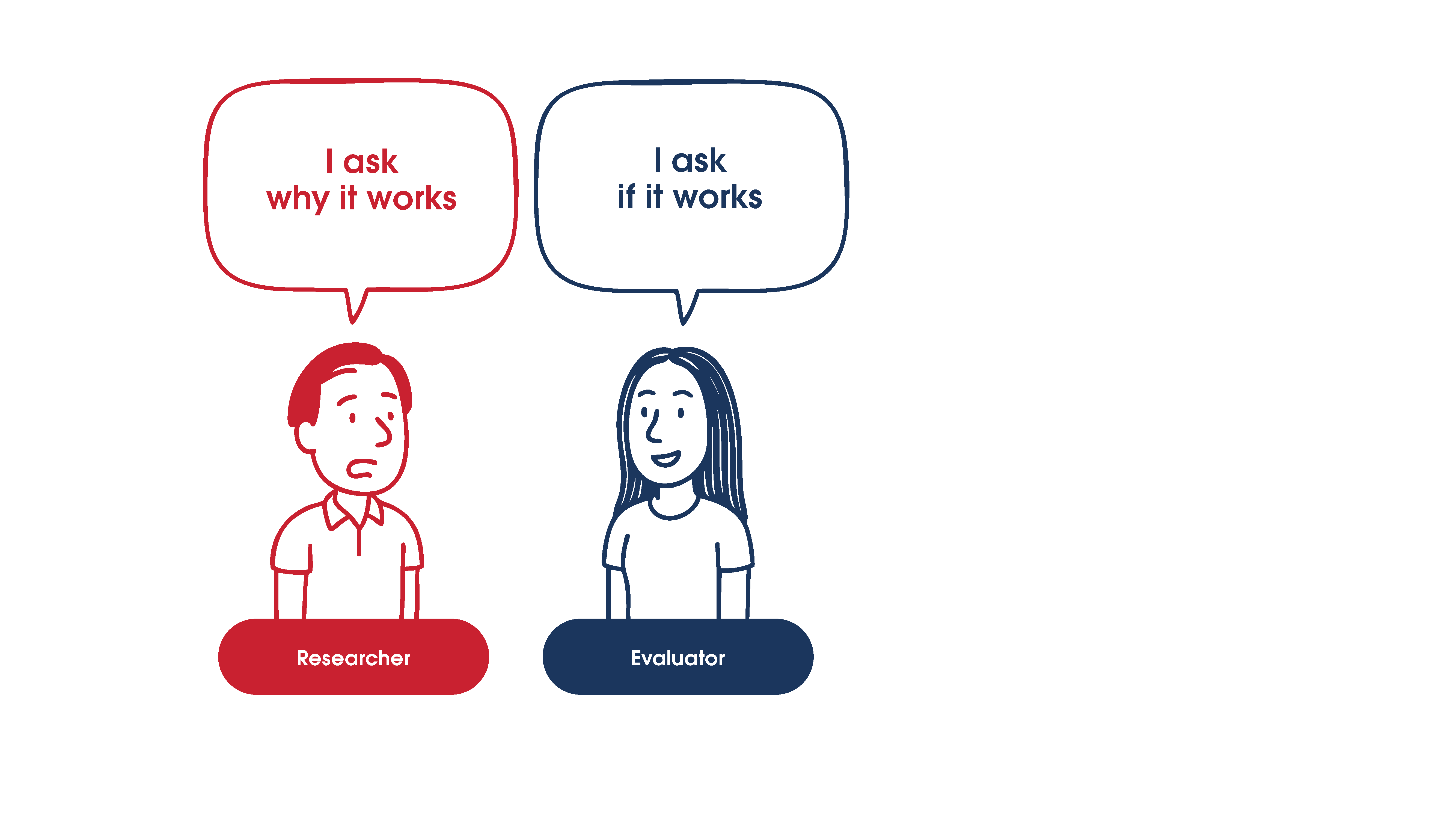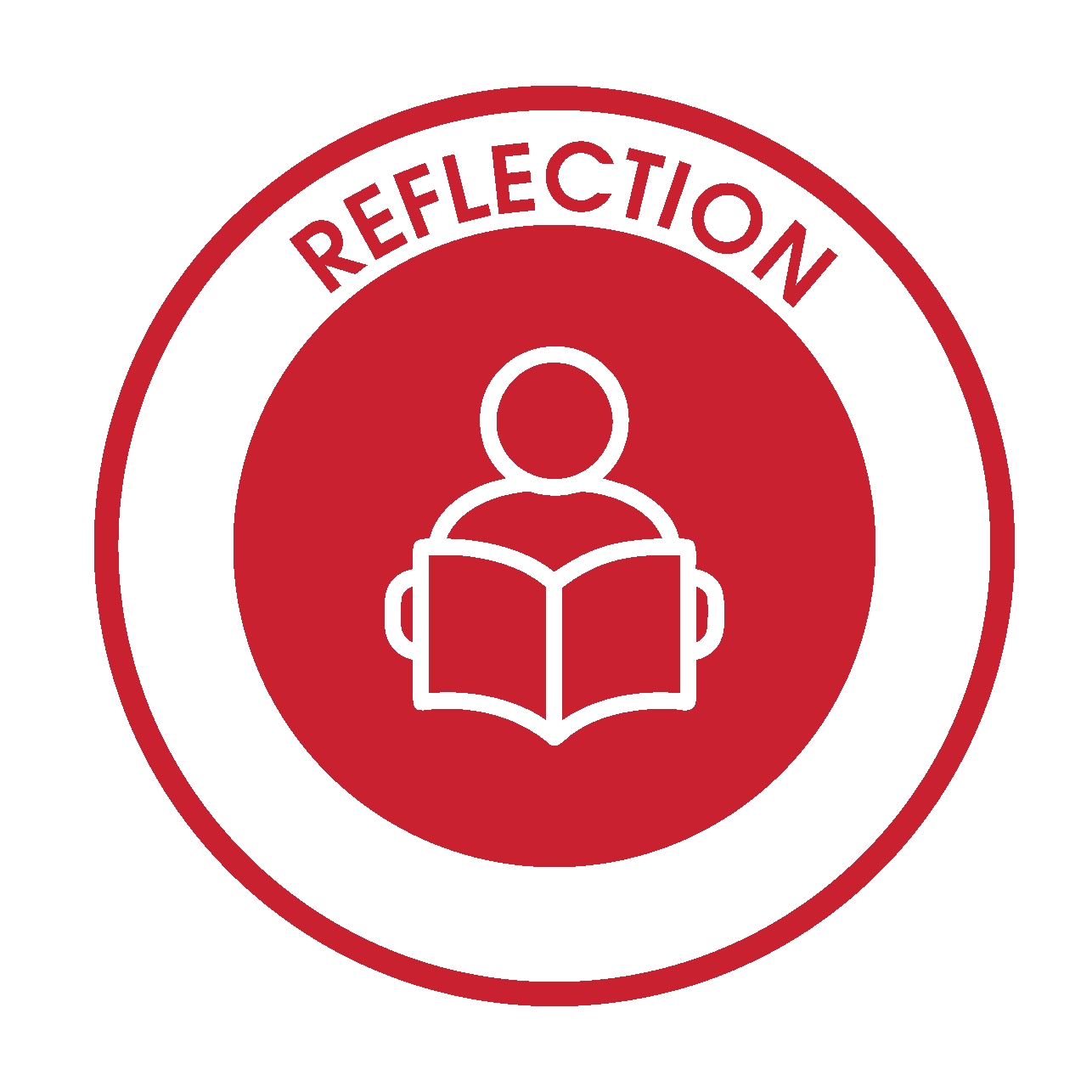Module 6.1: Introduction to key terms
Introduction to key terms
Monitoring and evaluation processes help you track your progress, learn as you go, and tell the story of your project’s impact. While monitoring and evaluation might sound technical, it is all about is asking good questions, collecting the right information, and using this to make better decisions.
This module will explore:
- What monitoring and evaluation are in community-based projects
- How monitoring and evaluation support learning, improvement, and accountability
- Key monitoring and evaluations terms and what they mean
- The difference between monitoring, evaluation, and research
Learning outcome:
By the end of this lesson, you’ll have a clear understanding of what monitoring and evaluation are and how it can help strengthen your project, even with limited time and resources
What is Monitoring and Evaluation?
Monitoring and evaluation, often shortened to M&E, are essential tools for planning, tracking, and assessing your community projects. As a grantee of the Heart Foundation Active Australia Innovation Challenge, you’re already making waves with innovative physical activity programs across diverse communities.
Before we dive in, let’s break down what some key M&E terms mean. Although “monitoring and evaluation” is often mentioned as if it’s one process, they’re two complementary functions.
Watch this video of David Hearle from IMI (2021) below for an introduction to these concepts.
Monitoring
Monitoring is how you check your progress while your project is running. Think of it like glancing at your dashboard while driving. It tells you if you’re on track, if everything’s running as planned, and if adjustments are needed along the way.
For example, if you’re running a program to encourage elderly Aboriginal women to walk in the mornings, monitoring would involve tracking how many sessions take place, how many people attend each session, and whether the sessions go as planned.
According to Goldman and Parbari (2020), monitoring is about making sure your activities are going as planned and learning from what’s happening along the way.
It allows you to:
- Track the progress of your project over time
- Gather useful information in a consistent way
- Learn and adapt as you go
- Make informed decisions when things change
- See how your outputs compare with your targets
Monitoring is an ongoing process. You might keep a weekly tally of participants, note any issues (like venue access), or share regular updates with stakeholders to show how implementation is progressing (Datalab.Africa, 2021a; UNDP, 2009).
Watch this video by Datalab.Africa (2021a) to learn more about monitoring.
Evaluation
Evaluation is a more focused, time-bound process. It happens at set points during or after your project and helps you understand the overall impact. Evaluation asks questions like, “Did participants increase their weekly physical activity?” or “Did the program improve mental wellbeing?”
While monitoring helps you track what’s happening during your project, evaluation helps you understand what changed because of it.
Put simply, evaluation is about gathering and analysing evidence to understand your project’s relevance, results, and overall impact (DPME, 2019).
It can help you:
- See whether you met your objectives
- Identify what worked well (and what didn’t)
- Make informed decisions about funding or future planning
- Capture lessons that can strengthen future programs
There are different types of evaluation, each with its own focus:
- Process evaluation explores how activities were delivered
- Outcome or impact evaluation focuses on what changed as a result
- Value-for-money evaluation looks at whether resources were used efficiently
(BetterEvaluation, n.d.; UNDP, 2009)
Watch this video by Datalab.Africa (2021b) to learn more about evaluation.
Research vs. Evaluation
While evaluation and research often use similar methods (such as surveys and interviews), they serve different purposes.
Research is about discovering something new. It often takes a lot of time and is focused on understanding bigger questions, like testing a theory or exploring how something works in general.
Evaluation, on the other hand, is more hands-on. It’s used to help project teams and funders understand what’s working, what’s not, and what could be done differently. It’s about learning and improving in real time.
Watch this video by the Australian Evaluation Society (2024) for an introduction to the differences and similarities between evaluation and research.
In short:
- • Research is about discovery
- • Evaluation is about improvement and decision-making (UNDP, 2009)

Baseline
A baseline is your project’s starting point. It shows where things are before your program begins, and helps you measure change over time.
For example, let’s say your project aims to increase physical activity among people with disabilities. Before the program starts, you survey local organisations and find that only 15% of people with disabilities are engaging in weekly exercise. That 15% becomes your baseline.
Six months later, you check again and find that 35% are now participating. That’s a clear sign of progress, and it’s thanks to your baseline that you can show it.
Don’t have baseline data at the start? That’s okay!
You can still collect baseline information during the early stages of your project. Or you might use comparisons (like similar communities) to estimate where things began.
Target
A target is the result you’re aiming for, a clear goal that gives your project direction. Your target should be informed by your baseline, your community’s needs, and what’s realistically achievable.
So, if your baseline is 15% of people participating in weekly activity, you might set a target of 40% by the end of the year.
Targets can be:
- Quantitative - e.g. 100 new participants by December
- Qualitative - e.g. participants feel more confident or have a more positive attitude toward physical activity

Good targets are realistic, backed by evidence, and clearly stated. Looking at what other similar programs have achieved can help you set meaningful and achievable goals.
Recap of key terms:
- Monitoring is about regularly tracking progress as your project is being delivered.
- Evaluation is a deeper look at outcomes and impact - what changed as a result of your work.
- Research focuses on generating new knowledge, while evaluation supports learning and decision-making.
- A baseline shows where things were before your project began.
- A target is the specific result you’re aiming to achieve within a set timeframe.
Understanding these terms will help you make sense of the rest of this module and start building your own practical M&E approach. No matter what your project is, these concepts are valuable in helping you show your impact, improve your program, and strengthen future funding proposals.
You'll find a glossary of key M&E terms just below for a reference you can use explaining M&E terms.
Click to download the Glossary of Monitoring & Evaluation Terms (PDF)
Activities

Knowledge Check Activity: Match the M&E Terms
Ready to test your understanding? Try this quick matching activity to connect key M&E terms with their definitions.

Reflection:
Take a couple of minutes to write down which two terms do you think are most important to understand for your project, and why?
References
- BetterEvaluation. (n.d.). What is evaluation? https://www.betterevaluation.org/en/what-evaluation
- Datalab.Africa. (2021a). Project Monitoring & Evaluation explained | 1 – What is Monitoring? [Video]. YouTube. https://www.youtube.com/watch?v=uAkMTgnuWvI
- Datalab.Africa. (2021b). Project Monitoring & Evaluation explained | 2 – What is Evaluation? [Video]. YouTube. https://www.youtube.com/watch?v=WcyTpzL83yk&t=32s
- Department of Planning, Monitoring and Evaluation (DPME). (2019). National Evaluation Policy Framework. Government of South Africa.
- Hearle, D. (2021). Monitoring and Evaluation Concepts. [Video]. YouTube. https://www.youtube.com/watch?v=vby29hiNU_Q&list=PLBSIU6Xsc6saAr2PDujKecX8SC6G31CL8&index=30
- Martino, N., & Fry, R. (2024). Evaluation and research…what’s the difference and why does it matter? [Video]. Australian Evaluation Society. https://www.youtube.com/watch?v=F9qj8jdCox4
- United Nations Development Programme (UNDP). (2009). Handbook on planning, monitoring and evaluating for development results. United Nations Development Programme.
